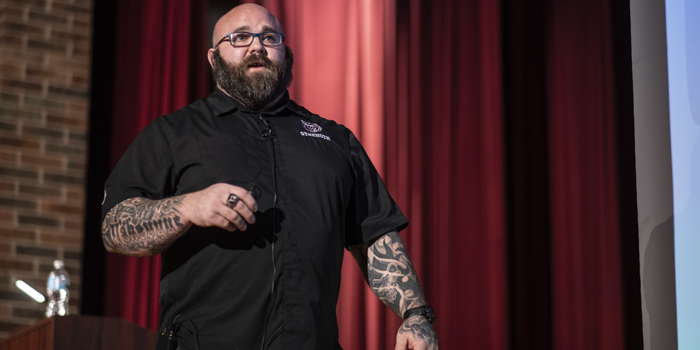
In the first video from his 2018 elitefts Sports Performance Summit presentation, Missouri State University Director of Strength and Conditioning Jeremy Frey shared tips for training and coaching the front squat in sport athletes. In this second segment of his presentation, Frey turns his attention to the bench press and shares what he believes to be the most important aspects of performing the bench press for athletic development. He begins by sharing several general points about the bench press and how it should be used by athletes:
- Everyone likes to bench press, and it won't be difficult to motivate your athletes to train hard on this exercise. It is also one of the best upper body strength movements you can possibly use.
- There are three points of contact that should remain during the entire movement: the feet in contact with the floor, the butt in contact with the pad of the bench, and the shoulders in contact with the pad of the bench.
- Packing the scapulas is extremely important. The athletes need retraction and depression in their shoulders for the entire movement.
- The athletes must tuck their elbow to 45 degrees. This not only helps them get more triceps and lats involved in the movement, but also helps avoid shoulder impingements and other injuries that occur from widely flared elbows in the bench press.
- The athletes can choose their grip but they must stay inside the power rings. It doesn't have to be an incredibly narrow grip, but it does have to be within the rings.
From a technique standpoint, Frey focuses on the extreme importance of the shoulders. He says that the number one reason for packing the shoulders is to take stress of the shoulders and keep athletes healthy while pressing. Using a series of photos demonstrating various bench press positions, Frey shows the difference between a proper setup and an improper setup for the bench press, specifically focusing on shoulder retraction and depression, arching of the back, and elbow angle. He also points out how being in the proper position can greatly alter the touch point for the bench press (which should be below the nipple line). When you're in the right position, the optimal touch point is lower on your body because of the packed shoulders and arched upper back. From this touch point, he says you should also press backward over your head rather than straight up.









